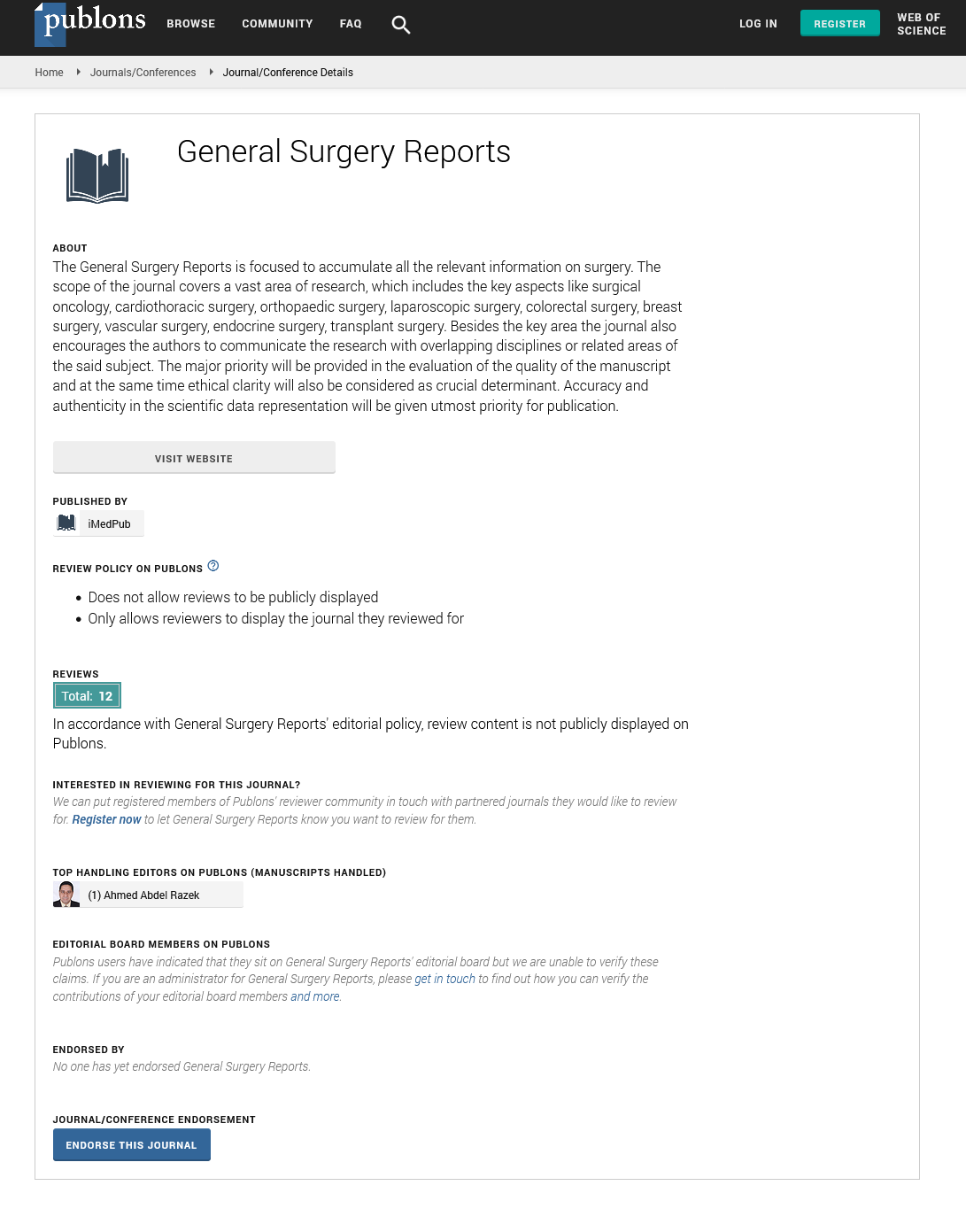Abstract
Hand Assisted Laproscopic Surgery an updated overview
Introduction: Hand assisted laparoscopic surgery is an updated highly advanced version of laparoscopic technique. Such technique bridges the gap between traditional surgery and total laparoscopic surgery. Introduction of the hand intracorporeally enhanced the degree of freedom, hence, a remarkable degree of precision and safety in task performance. Clinical and experimental studies confirmed safe use of the hand with insufflation pressure enhancing dexterity as well as a steep learning curve. Therefore, the author made an overview analysis to the factors related to safety; efficiency; dexterity; instrumentation and cost-effectiveness for the use of hand assisted laparoscopic surgery; with an emphasis on live donor nephrectomy. Results and discussion: Prospective studies made by Kolvenbach on the use of hand assisted laparoscopic surgery in aortic aneurysm repair proved high degree of safety and efficiency as well as cost effectiveness. Several studies highlighted a multitude of factors significantly contributing into a high degree of precision and task performance; which reflected on uneventful enhanced recovery programme. The introduction of either hand intracorporeally enhanced the limited degree of freedom for the current laparoscopic tools. There are various hand port devices of which the pros and cons for each port will be discussed in detail. The author’s experimental studies confirmed that optimum safe insufflation pressure would be 10 mm Hg with no leak from the hand port and optimum dexterity and task performance. Conclusion: Hand assisted laparoscopic surgery is a safe and efficient technique. It significantly enhances concept of Enhanced Recovery programme. Raising public awareness can provide a high impact in enhancing live donor nephrectomy; hence reducing the inexorable renal transplant waiting list for patients with end stage renal disease. Such patients are at progressive rise of mortality risk with prolonged waiting list.
Author(s): Elenin Haussam
Abstract | PDF
Share This Article
Google Scholar citation report
Citations : 6
General Surgery Reports received 6 citations as per Google Scholar report
General Surgery Reports peer review process verified at publons
Abstracted/Indexed in
- Google Scholar
- Publons
Open Access Journals
- Aquaculture & Veterinary Science
- Chemistry & Chemical Sciences
- Clinical Sciences
- Engineering
- General Science
- Genetics & Molecular Biology
- Health Care & Nursing
- Immunology & Microbiology
- Materials Science
- Mathematics & Physics
- Medical Sciences
- Neurology & Psychiatry
- Oncology & Cancer Science
- Pharmaceutical Sciences
